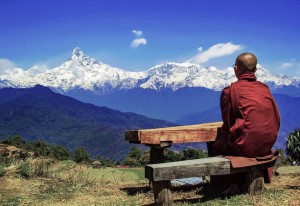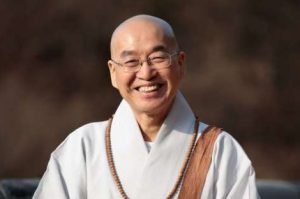
A key part of introducing the Dharma to parents who are new to a Buddhist school is presenting Buddhism and meditation in an accessible manner. Depending on the school or the lineage of Buddhism on which the school is based, there might be aspects that are complex or esoteric. For school-age children learning meditation for the first time, a goal for family outreach is to share what their children are learning and to ensure that the parents can learn in parallel.
Modern parents work hard, whether at outside jobs or as homemakers, or both. Our culture and society here in the United States is fraught with stressors. In school, we try to reduce the stress factor for students as life is already packed with expectations, tasks, events, and challenges, both inside and outside the home.
Buddhism spreads by magnetization—not by conversion or proselytizing—and this has been true from the very start. An excellent way to introduce parents and caregivers to the Buddhadharma is by hosting a simple meditation group in which sitting or walking meditation for short sessions is interspersed with question-and-answer time. In this way, parents can enquire about their own experiences as well as their child’s classroom experiences. They begin to gain an embodied or a felt sense of meditation, which is the heart of Buddhist practice. While parents come from a variety of backgrounds, whether spiritual, agnostic, or atheist, the practice or study of the Dharma does not contradict or negate other paths. Rather, all paths and perspectives can be included in whatever way is most sensible for the practitioner.

In the parent meditation group that I lead, I host a variety of facilitators from backgrounds different to my own who come in to demonstrate and model meditation. Even the mere difference of being in a variety of bodies—race, gender, age, shape, size, background, or practice lineage—means that parents can have experiential access to differing styles and embodiments of meditation. This is vital for newcomers to develop their connection to meditation, and not merely intellectual access to information, history, or lectures.
Other ways include book study groups, or listening to podcasts and then discussing them. There is no shortage of excellent teachers and meditators from different Buddhist lineages. I find that it is good to expose new parents to options in the Dharma so that they might find teachers to whom they most relate, rather than me telling them who my favorites are or modeling only one or two ways.
The path that I follow now is radically different from my first experiences of Buddhism, yet both remain precious to me. It is easy to relate the daily goings-on of our complex lives to tenets of the Dharma. Engaging in a Dharma path is akin to the scientific method of questioning, observation, experiential learning, experimentation, and conclusion-drawing for oneself based on this embodied research. This all takes time! And it need not be rushed.
For beginners, knowing that the heart of the path is meditation is essential. Next is engaging with that for oneself so it is not just an abstract theory. They don’t need to know about the many complex enumerations beyond the basics such as the five precepts. Becoming familiar with sitting, being, and resting the mind while awake, without having to do anything, is revolutionary in the beginning. Buddhist concepts and theory can be brought in, of course, but these alone leave a person feeling like an outsider or merely encourage intellectual gymnastics that skirt the heart and purpose of the Dharma.

Truth is discerned by observation (inner and outer). This leads to knowledge, wisdom, to understanding the nature of reality in an earthly sense, as well as in the cosmic or spiritual sense. We do not make this up—the laws of nature and reality come from the elements themselves, on the subtle and gross levels. We are also made up of these same gross and subtle elements—fire, water, earth, air, and space—and we live both within and interconnected with them.
This knowing and the cultivation of awareness breed empathy, which leads to wisdom and compassion. On the path of inquiry, through resting, noticing, and listening, we ideally become more open and curious. This is why Buddhism includes all other paths or ways of living. It is not a dogma, but rather a way of investigating and acting on the discoveries of interconnectedness, impermanence, cause and effect, and deepening our interest in others and all of experience. It is a privilege and a joy to introduce people freshly to the Dharma, to meditation, and to Buddhism, whether they are parents, children, or anyone at all.

Related features from BDG
Dharma versus Buddhadharma at a Buddhist School
Children in Lockdown: The Need for a More Mindful Approach to Education
For Our Children’s Sake: Dismantling Racism and Bias in Schools
The Seed of Compassion: Dalai Lama’s First Children’s Book Due Out in March
A School for the Forgotten Children of the Himalayas
Finding Ways to Educate Our Children with Buddhist Wisdom
Educating Buddhist Children in America












